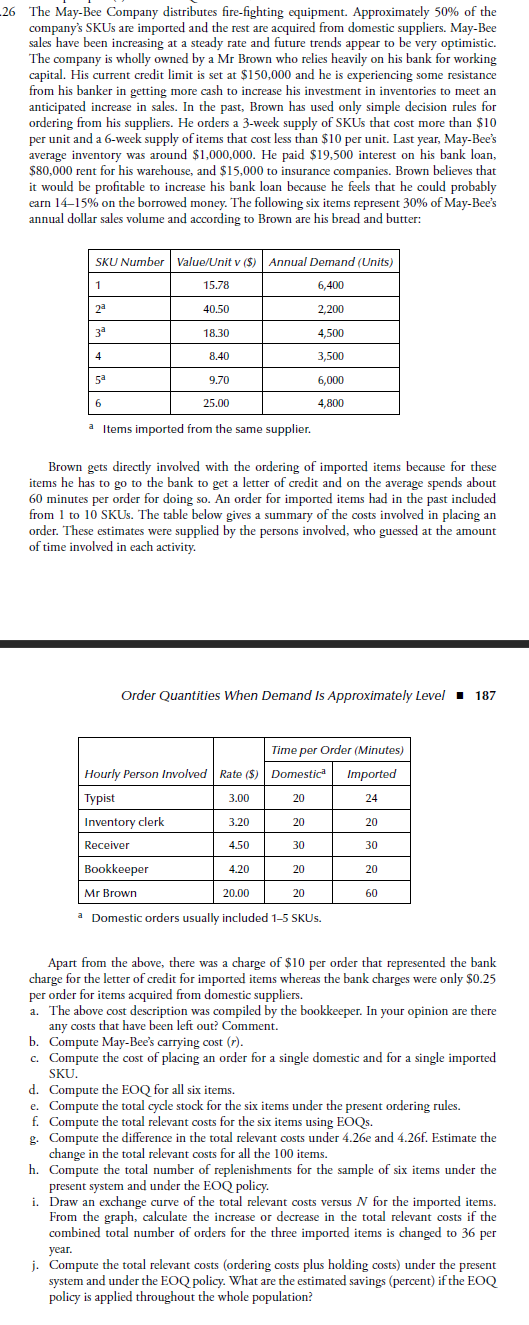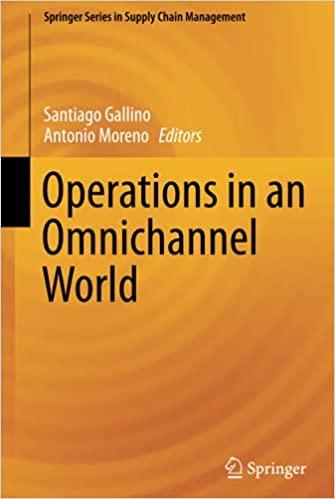
26 The May-Bee Company distributes fire-fighting equipment. Approximately 50% of the company's SKUs are imported and the rest are acquired from domestic suppliers. May-Bee sales have been increasing at a steady rate and future trends appear to be very optimistic. The company is wholly owned by a Mr Brown who relies heavily on his bank for working capital. His current credit limit is set at $150,000 and he is experiencing some resistance from his banker in getting more cash to increase his investment in inventories to meet an anticipated increase in sales. In the past, Brown has used only simple decision rules for ordering from his suppliers. He orders a 3-week supply of SKUs that cost more than $10 per unit and a 6-week supply of items that cost less than $10 per unit. Last year, May-Bee's average inventory was around $1,000,000. He paid $19,500 interest on his bank loan, $80,000 rent for his warehouse, and $15,000 to insurance companies. Brown believes that it would be profitable to increase his bank loan because he feels that he could probably earn 14-15\% on the borrowed money. The following six items represent 30% of May-Bee's annual dollar sales volume and according to Brown are his bread and butter: a Items imported from the same supplier. Brown gets directly involved with the ordering of imported items because for these items he has to go to the bank to get a letter of credit and on the average spends about 60 minutes per order for doing so. An order for imported items had in the past included from 1 to 10 SKUs. The table below gives a summary of the costs involved in placing an order. These estimates were supplied by the persons involved, who guessed at the amount of time involved in each activity. Order Quantities When Demand Is Approximately Level 187 a Domestic orders usually included 1-5 SKUs. Apart from the above, there was a charge of $10 per order that represented the bank charge for the letter of credit for imported items whereas the bank charges were only $0.25 per order for items acquired from domestic suppliers. a. The above cost description was compiled by the bookkeeper. In your opinion are there any costs that have been left out? Comment. b. Compute May-Bee's carrying cost (r). c. Compute the cost of placing an order for a single domestic and for a single imported SKU. d. Compute the EOQ for all six items. e. Compute the total cycle stock for the six items under the present ordering rules. f. Compute the total relevant costs for the six items using EOQs. g. Compute the difference in the total relevant costs under 4.26e and 4.26f. Estimate the change in the total relevant costs for all the 100 items. h. Compute the total number of replenishments for the sample of six items under the present system and under the EOQ policy. i. Draw an exchange curve of the total relevant costs versus N for the imported items. From the graph, calculate the increase or decrease in the total relevant costs if the combined total number of orders for the three imported items is changed to 36 per year. j. Compute the total relevant costs (ordering costs plus holding costs) under the present system and under the EOQ policy. What are the estimated savings (percent) if the EOQ policy is applied throughout the whole population







